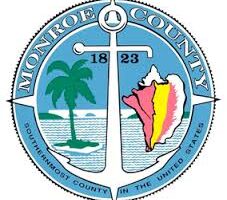EMS billing still won’t cover discounted ambulance fees for locals
BY PRU SOWERS
KONK LIFE STAFF WRITER
Key West residents hoping for a break on the cost of local ambulance service are going to have to wait.
When city commissioners heard the first-year operating numbers presented by Key West EMS Division Chief Edward Perez back in May, the hoped-for collection rate of 40 percent stood at approximately 30 percent. As a result, the expected revenue stream from patient ambulance calls was enough to cover the department’s costs but too low at that point to begin offering discounts to local residents.
Perez was back in front of commissioners at their Dec. 6 meeting with cost and revenue results for the full 2016 fiscal year. While the total revenue collected is at or slightly below expectations, the collection rate is still hovering around 30 percent, not enough to fill EMS coffers beyond its current expenses.
“It would be a big financial loss to the city,” Perez said about locals’ discount rate. “It would be a big burden on taxpayers.”
Currently, any gap between what EMS spends providing emergency services and the revenue collected must be made up by taxpayers. For FY 2016, which ended Sept. 30, EMS billed $3.051 million. At the end of the fiscal year, the city had collected $1,069,429. The estimated collected revenue for the first full fiscal year was $1.2 million.
“We’re right on track with what they expected to be collected. We’re right on target,” Perez said.
Commissioners were again disappointed not to be able to tell their constituents they would receive a break on ambulance services, similar to Monroe County offering free medical helicopter transfers to area and mainland hospitals. However, Perez held out some hope, saying that if the city went to an in-network insurance plan, patients could see their bill lowered by potentially several hundred dollars. Currently, an ambulance run costs Key West EMS $779. Under the current out-of-network system, a patient is charged $696 with his or her insurance company picking up the remainder of the cost after the patient pays the mandated deductible.
Under a hypothetical in-network plan offered by Blue Cross/Blue Shield, an ambulance patient would be charged approximately $350 for his or her share of the deductible. But the city would only be allowed to charge what the insurance carrier allowed for an ambulance run. In the cast of Blue Cross/Blue Shield, the maximum ambulance charge is $433, leaving EMS stuck holding the $346 difference. And that gap would have to be made up by taxpayers.
As a result, Perez said, the department cannot afford to change to an in-network plan at this point.
“We cannot bill 100 percent of the charges,” he told commissioners. “It will pose a financial loss to the city by becoming in-network.”
Commissioner Billy Wardlow, who has been advocating discounted or free ambulance rates for residents since the city took over EMS in 2015, was interested in the in-network plan, pointing out that taxpayers already have to close any gap in the EMS budget. And Commissioner Sam Kaufman also indicated he wanted to know more about an in-network plan.
“We need to move in that direction because that’s the expectations of most people,” he said.
Commissioner Margaret Romero, however, said that subsidizing individual patients was not fair to taxpayers as a whole
“While we might be giving an individual who takes that ambulance ride some sort of benefit, it’s going to be absorbed by the rest of the taxpayers,” she said.
Commissioners voted in June 2014 to take over ambulance and emergency services that had been provided by privately-owned Care Ambulance, which told the city it would not renew its contract as of March 31, 2015. Commissioners voted to take on the project after being assured it would ultimately save money and provide a more dependable service than an outside agency.
When commissioners voted to take over EMS services, consultants hired by the fire department estimated a first-year cost of $1.5 million, with a 40 percent collection rate for EMS billing, including ambulance transportation to the Lower Keys Medical Center. However, four months after the fire department began offering EMS services, the first-year budget was increased to $2.1 million to cover higher than anticipated training costs.
[livemarket market_name="KONK Life LiveMarket" limit=3 category=“” show_signup=0 show_more=0]




No Comment